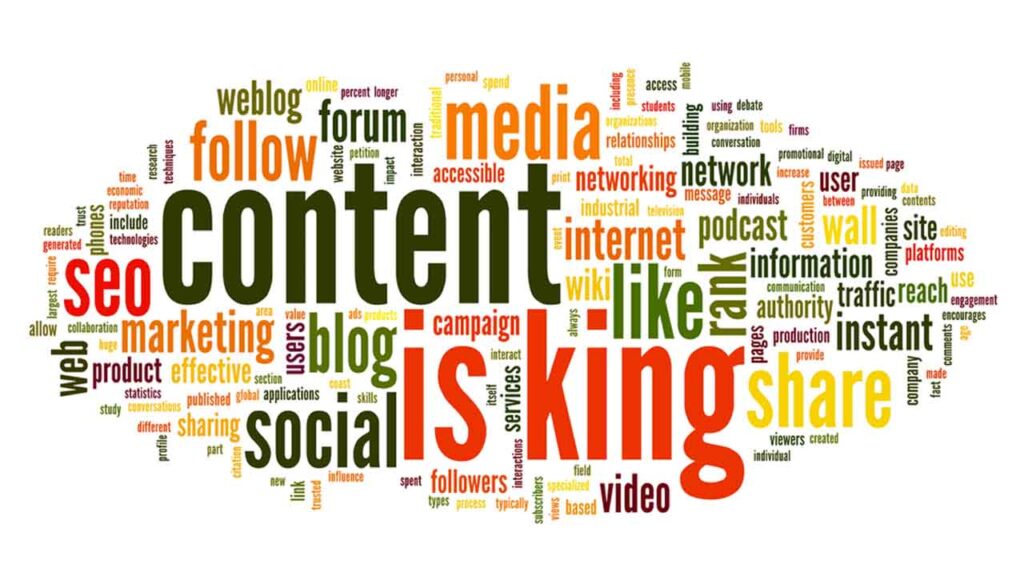Maximizing Your Brand: Essential Social Media Marketing Strategies
Brett Lewis
Social Media Marketing - March 21, 2024
Looking to navigate the complex world of social media marketing? It’s all about connecting with your audience in a meaningful way and leveraging the right tools to strengthen your brand’s presence. This article strips away the complexity to offer clear, actionable strategies for engaging with followers, optimizing content, and enhancing your social media campaign’s performance. Step into a realm of opportunities with guidance that’s straightforward and results-driven.
Key Takeaways
- Social media marketing involves leveraging social media platforms to build relationships and promote brands, and requires ongoing engagement, platform-specific strategies, and performance tracking through analytics.
- A well-crafted social media strategy includes setting SMART goals, knowing your audience, and choosing the right platforms, while creating engaging content under a consistent brand voice using a variety of content types.
- Social media marketing success hinges on balancing organic and paid content, utilizing analytics for insights and continuous improvement, and staying adaptable to the ever-changing landscape, platform features, and emerging trends.
Understanding Social Media Marketing

In today’s interconnected world, social media marketing has become a pivotal component of successful business strategies. Social media marketing is essentially a type of digital marketing. It leverages various social media platforms to promote your brand and offerings to your ideal customers. But it’s not just about blatant promotion. It’s about building connections and relationships that eventually translate into brand loyalty and increased sales.
The use of social media for marketing purposes has seen tremendous growth, enabling businesses to reach billions of users worldwide. While cost-effective and with the potential for broad exposure, social media marketing is not without challenges. It requires ongoing interaction and can yield unpredictable outcomes. But with a well-crafted strategy, the potential benefits far outweigh these challenges.
Defining Social Media Marketing
So, what exactly is social media marketing? At its core, it encompasses both organic interactions and paid promotional strategies. Activities within social media marketing range from sharing content, engaging with the audience, to promoting via paid ads. What makes social media marketing particularly powerful is its ability to track and assess campaign success through data analytics.
Having a comprehensive understanding of these components is crucial. It equips you with the knowledge to leverage various aspects of social media marketing to their fullest potential, aligning with your specific business goals and ultimately steering your business towards success.
The Role of Social Media in Digital Marketing
Social media marketing plays a pivotal role in the broader context of digital marketing. It provides platforms for effective consumer engagement, crucial for connecting with prospective customers. But it’s not just about random posts. Consistent branding across social media channels is key to extending a unified brand identity, making it easier for businesses to be recognized and remembered by their audience.
Moreover, social media analytics tools are crucial for optimizing marketing strategies. They track performance, measure engagement, and provide insights about audiences and competitors. Maintaining up-to-date knowledge of social media trends is essential for ensuring content visibility and engaging with users effectively to remain competitive. Therefore, businesses must balance their activity on social media, posting enough to stay relevant without overwhelming their audience.
Crafting a Robust Social Media Marketing Strategy

Having a robust social media marketing plan is the cornerstone of a successful marketing endeavor. It’s like a roadmap, guiding your brand in the vast social media landscape. A well-crafted plan begins by writing down at least three SMART (Specific, Measurable, Achievable, Relevant, Time-bound) social media marketing goals, such as increasing brand awareness, driving website traffic, or boosting customer engagement.
Following goal setting, conducting research on buyer personas and audience is crucial. It allows you to tailor your social media marketing efforts to your specific target demographic, utilizing feedback from followers to refine and improve this knowledge. The social media marketing strategy needs to align with clear business objectives, requiring a list of current and planned social media accounts with platform-specific goals that fit within the broader digital marketing strategy.
Set Measurable Goals
For your social media strategy to be effective, setting clear, achievable goals is crucial. It helps track progress and measure success, providing a clear path and direction for your marketing efforts. Documenting these goals in a social media strategy document aids in effectively tracking them.
But setting goals is only the first step. Monitoring these goals is equally important. Social media analytics tools like Google Analytics, Facebook Insights, and Twitter Analytics can track key performance indicators, aligning them with your overall business goals and metrics.
Know Your Audience
Knowing your audience is the backbone of an effective social media marketing strategy. It’s about understanding the real wants and needs of your ideal customer, where they live, and how they interact with your brand on social media. This key information should be documented in your social media strategy, serving as a guide for tailoring your marketing efforts.
For organic social media content, understanding the audience’s demographics, preferences, and behavior on various social platforms is crucial to maximizing reach. Analyzing social media trends offers insights into user behavior and preferences, informing your content tailoring and engagement strategies.
Choose the Right Platforms
Choosing the right social media platforms is key to a successful strategy. Businesses should prioritize networks where their core audience is already active and consider the alignment with their specific industry. A clear strategy should be defined for each selected platform, tailored to the platform’s unique strengths and the business’s goals.
For instance, Facebook is considered a must-have platform for brick-and-mortar businesses looking to connect with local customers and build a local community around their business. Therefore, understanding the business-specific strengths of each platform enables you to leverage them effectively.
Content is King: Creating Engaging Social Media Posts

When it comes to social media marketing, content is king. Engaging content can include a mix of:
- Text
- Images
- Videos
- Stories
Using formats such as images, videos, live streams, and online stores for content creation. Utilizing a variety of content formats keeps the audience engaged, with Stories providing interactivity and personality, while diverse content solidifies the brand’s industry leadership.
Businesses can create unique social media content by looking at competitors, taking advantage of platform features, using user-generated content, and maintaining a consistent brand voice to convey a unified message. And to make this process more efficient, there are a plethora of tools like Canva, Pixabay, Unsplash, and Freepik that are extremely helpful.
Types of Content That Drive Engagement
The type of content you produce can greatly impact the level of engagement you receive. For instance, short-form videos are recognized for their ability to distill information concisely, making them particularly shareable and suitable for social media platforms. Live videos engage audiences by allowing real-time interaction, fostering a sense of community, and can be repurposed for additional content.
Images provide immediate brand impressions due to their instant absorption and interpretation, making them the second most popular type of content. GIFs and memes are highly shareable and resonate with younger demographics due to their relatable and humorous nature. User-generated content is highly trustworthy and valued by consumers for its authenticity and social proof.
Consistency in Your Brand Voice
Maintaining a consistent brand voice on social media is essential for establishing a distinct identity. It imbues the brand with human qualities instead of appearing robotic, helping to create a more personal connection with the audience. The consistency of tone and voice across various content types enhances the brand’s identity and contributes to the overall perception of the brand’s personality on social platforms.
Beyond this, optimizing social media profiles with consistent branding elements and relevant keywords is important for improving brand recognition and making it easy for users to find the brand in search results. Therefore, consistency in your brand voice not only helps increase brand awareness but also enhances user engagement.
Utilizing Content Creation Tools
In an era of digital marketing, content creation tools play a significant role in streamlining the process. Important tools for social media include solutions like Sprout Social and design platforms such as Canva and Freepik. These tools have democratized the creation of high-quality images for social media, allowing users to produce professional-grade content.
Furthermore, social media content calendars are essential for:
- Planning and sharing posts at optimal times to maximize audience engagement
- Simplifying the content creation process
- Enhancing the efficiency and effectiveness of your social media marketing efforts.
Leveraging Social Media Analytics for Success

Leveraging social media analytics is crucial to the success of your marketing efforts. It helps you track data, determine the effectiveness of strategies, and identify top-performing content. Social media analytics tools offer capabilities for tracking a range of metrics such as:
- engagement rate
- impressions
- saves
- follower growth
Tools like Hootsuite streamline the review of all network posts.
Analytics data informs content creation by revealing audience response to content and suggesting adjustments to improve performance. Moreover, competitive analysis and reviewing top-performing content leads to insights that ensure marketing efforts stand out and are tailored to be more effective than competitors. Regular reporting and revisiting the social media marketing strategy based on the analytics data is essential for continuous improvement and reaching marketing goals.
Tracking and Analyzing Performance
Tracking and analyzing performance is a critical part of any social media strategy. Social media metrics provide data related to the success of posts and impact on the audience and customers across various platforms, which is essential for assessing progress toward goals, actual performance, benchmarks, and key performance indicators (KPIs). But it’s not just about tracking any metrics. Meaningful metrics such as engagement, click-through, and conversion rates, among others, should be focused on as opposed to just vanity metrics such as followers and likes.
Analytics tools provide valuable information about followers’ demographics and how they interact with a brand, crucial for tailoring the marketing strategy to the audience’s preferences. Improving organic content performance is guided by insights from past posts while A/B testing is recommended to compare the efficacy of different social ads, enabling refined adjustments to marketing strategies.
Interpreting Data to Inform Strategy
Interpreting data to inform strategy is an essential aspect of a successful social media marketing strategy. Modifying content strategies based on algorithm changes can help brands maintain or improve their search engine optimization performance. Marketers plan to track conversations and sales directly resulting from social efforts in 2024.
Social media teams act as the eyes and ears for the brand online, gathering critical insights that can transform the business. Conducting surveys to ask followers, email list, and website visitors about their needs and expectations provides valuable feedback for evaluating the social media strategy.
Benchmarking Against Competitors
Benchmarking against competitors is a crucial aspect of a well-rounded social media marketing strategy. Understanding the current state of your industry and identifying who your competitors are is essential for setting social media benchmarks and identifying strategic opportunities. Using social listening tools can help in spotting unfiltered consumer feedback about competitors, contributing to a thorough competitive analysis.
Monitoring competitors’ customer reviews provides valuable insights into customer preferences and pain points, informing improvements and differentiation in your own social media strategy. Following competitors on social media can reveal ideas for content and strategy as well as identify gaps that can be converted into opportunities for differentiation.
Diversifying Across Major Social Media Platforms

In the world of social media marketing, diversification is key. Spreading marketing efforts across multiple social media platforms can help brands reach a more diverse and extensive audience. Diversification across platforms can reduce the risk of impact from algorithm changes, policy updates, or technical glitches on any single platform. Having a presence on multiple social media platforms supports the encouragement of experimental approaches to marketing strategies.
To engage effectively on social media, strategies must be tailored to the specific platform to meet the audience where they are and interact with them as they socially engage with the brand. YouTube can serve to explain complex topics and showcase processes, thereby fitting into a multi-platform strategy that harnesses video content.
Tailoring Strategies for Each Platform
Each social media platform has its unique functions and significance for businesses. Major social media platforms like:
- YouTube
- TikTok
- Snapchat
each have unique functions and significance for businesses. Content types across platforms vary significantly; LinkedIn favors industry-related content and networking opportunities, while Snapchat engages audiences with fun images and short videos.
Effective social media marketing entails crafting strategies that not only relate to the content preferences of each platform but also align with their unique algorithms and audience engagement behaviors to optimize content performance. Therefore, tailoring strategies for each platform is crucial for the success of your overall social media marketing strategy.
Managing Multiple Platforms Efficiently
Managing multiple platforms efficiently can be a challenging task. But with social media management platforms like Hootsuite, this task becomes significantly easier. Hootsuite allows for easy management and organization of a social media marketing strategy from a single dashboard, which includes the ability to organize a media library and schedule posts in advance.
Repurposing the same content, with slight adjustments to cater to various platforms, can help maintain their presence effectively and efficiently. Social media management tools can distill customer messages into actionable insights, providing valuable feedback for product or merchandising teams.
Paid vs. Organic: Balancing Your Social Media Approach
Balancing between paid and organic social media approaches is another critical aspect of a successful social media marketing strategy. Organic social media posts share content with your current followers, while paid social media posts are advertised to target demographics that align with your audience. A balanced marketing strategy should include both organic and paid social media content to engage audiences at every stage of the buyer’s journey.
Facebook’s ad platform offers a sophisticated tool for businesses to cut through the noise and target specific demographics, standing out as a leading solution for paid social media ads. Therefore, investing in paid social media advertising can significantly boost your social media marketing efforts.
When to Invest in Social Ads
Knowing when to invest in social ads is crucial for any social media marketing strategy. The declining organic reach on social media and the impact of algorithm changes necessitate the investment in social ads to maintain content visibility. Social media platforms provide precise targeting options for ads, maximizing the relevance to the audience and ad spend efficiency.
Social media ads allow for immediate feedback, enabling quick adjustments in strategy to focus on the most effective ads. ROI from social ads is measurable through platform reporting features, offering clear insights into the monetary success of campaigns. Therefore, understanding the various factors that impact social media advertising costs is crucial for effective ad spend strategies.
Maximizing Organic Reach
While investing in social ads is crucial, maximizing organic reach is equally important. Social media organic reach has declined over the years, with a notable decrease from 12 percent to under 6 percent reach per post for Facebook Pages. Despite this decline, brands can still increase their organic reach by adapting to algorithm changes and focusing on content that drives active interactions.
A strategy of posting fewer but higher-quality pieces of content has been effective for some businesses in increasing their organic reach on platforms like Facebook. Brands that engage with user-generated content and feature it on their social media can capitalize on organic reach by showcasing the best user content from around the web.
Creating and managing active social media groups could potentially lead to higher organic reach due to the likelihood of increased member interactions and engagement within the group. Exploring emerging and niche social media networks can offer first-mover advantages to brands before these platforms become saturated with competitors, helping them generate leads.
Enhancing Customer Relationships Through Direct Messaging
In today’s digital age, enhancing customer relationships through direct messaging is an effective way to personalize the customer experience and form stronger connections. Businesses have been increasingly relying on direct messaging through social media platforms to:
- Personalize the customer experience
- Form stronger connections
- Inform customers of promotions and updates
- Offer personalized customer support
Direct messaging offers a private communication channel that can help businesses build brand loyalty.
Businesses can use direct messaging to swiftly address negative comments or issues, potentially turning a poor customer experience into a positive one. Additionally, social media direct messaging can be part of a larger campaign to increase sales, generate new leads, and maintain customer engagement.
Personalized Customer Service via Social Media
Personalized customer service via social media is a powerful tool to foster customer loyalty and support business growth. AI and chatbots can provide faster responses to customer messages on social media, enhancing customer service. Direct messaging allows companies to offer higher levels of personalization in customer service, which customers appreciate.
Employing direct messaging within conversational marketing strategies helps to nurture long-term customer relationships. This personalized customer service fosters customer loyalty and supports business growth. Therefore, integrating personalized customer service via social media into your marketing strategy can significantly enhance your customer relationships.
Driving Sales Through Conversational Marketing
Driving sales through conversational marketing is another effective strategy to consider. Interactive features such as GIFs on platforms like Facebook, Twitter, and LinkedIn make social media interactions more dynamic. The use of dynamic elements in conversations contributes to a more engaging user experience, which is conducive to driving sales.
Conversational marketing via social media is recognized for its effectiveness in increasing conversion rates. Therefore, integrating conversational marketing into your social media strategy can significantly boost your sales and overall business growth.
Building a Content Calendar for Streamlined Social Media Management
Building a content calendar can significantly streamline your social media management process. Content calendars should be designed to reflect the mission statement of each social media profile to ensure they support the overall business goals and content strategy. Using a content calendar allows for efficient planning of various social media activities such as:
- images
- blog posts
- videos
- the effective use of recurring content themes
Content calendars streamline social media management by coordinating cross-functional team efforts, managing time effectively, and ensuring posts are spaced out and published at the best times. Work management platforms and other productivity tools like Hootsuite, which can suggest the best times to post based on past engagement data, are valuable for organizing and visualizing social media content calendars.
Importance of a Content Strategy
Having a solid content strategy is crucial to maintaining a consistent posting schedule across social media accounts. A content strategy is essential to maintaining a consistent posting schedule across social media accounts, which can prevent coverage gaps and underpin an organized approach to producing and distributing content.
Your content strategy should:
- Align with your business goals and audience preferences
- Guide the creation and distribution of content that engages your audience
- Drive your audience towards a desired action, such as making a purchase or subscribing to a newsletter.
Scheduling for Success
Effective scheduling is a critical aspect of successful social media management. Social media content calendars allow marketers to organize and schedule diverse content, balancing evergreen and timely posts to maintain audience engagement. Determining the best times to post on social media should be based on when your audience is most active to automate posting for increased real-time engagement.
Using a scheduling tool is recommended for preparing social media messages in advance, facilitating regular content delivery without manual intervention. A well-maintained content calendar enables strategic sharing of content around important company dates, such as product launches, to maximize content impact.
Navigating the Changing Social Media Landscape
The social media landscape is ever-changing, and businesses must adapt to stay ahead. Staying updated with the latest trends in the social media landscape is crucial for maintaining the relevance and effectiveness of a marketing strategy, as well as a strong social media presence. As stated by a study, 33% of consumers consider a brand memorable on social media if it publishes timely, on-trend posts.
New platforms and features are constantly emerging, offering fresh opportunities for businesses to connect with their audience. Therefore, keeping a keen eye on the changing landscape and adapting your strategy accordingly is key to staying competitive in the social media space.
Adapting to New Features and Algorithms
As the social media landscape evolves, it’s crucial for businesses to adapt to new features and algorithms. Understanding and adapting to algorithm updates can significantly aid in keeping content visible and engaging to the intended audience. To stay on top of social media changes, it’s vital to monitor algorithm updates and understand their impact on content visibility.
Creating quality content, fostering genuine engagement, and building strong bonds with the audience are essential strategies that align with social media algorithms. Platforms like TikTok and Instagram offer tools for creating short-form videos, which can be used to benefit from high organic reach during the initial feature rollouts.
Emerging Platforms and Trends
Emerging platforms and trends offer new opportunities for businesses to reach their target audience. Emerging social media platforms like TikTok have been growing in popularity and are becoming integral to marketing strategies. As of September 2021, TikTok reached a milestone of 1 billion users, indicating its expansive reach and potential for community building.
In 2024, new platforms like Threads, Lemon8, and Bereal have gained popularity and are considered emerging platforms to keep an eye on. These platforms are worth watching due to their potential impact in the coming years. Emerging platforms may offer more effective ways to reach target audiences compared to existing strategies, signaling a shift in how marketers approach social media. Following influencers can help businesses stay on top of trends and adapt their social media marketing accordingly.
Summary
To wrap up, an effective social media marketing strategy is a crucial component of any business’s digital marketing efforts. It involves understanding your audience, setting clear goals, creating engaging content, leveraging social media analytics, and adapting to the ever-changing social media landscape. Whether you’re a small business or a multinational corporation, a well-crafted social media strategy can help you connect with your audience, build brand awareness, and drive sales.
Frequently Asked Questions
What is the importance of a social media marketing strategy?
Having a social media marketing strategy is important because it guides your brand’s actions, outlines goals, and helps track progress and success. It also allows for adaptation to changes in the digital landscape.
How can I create engaging social media content?
To create engaging social media content, understand your audience’s preferences, use a mix of content formats, and maintain a consistent brand voice. This approach will help you connect with your audience and drive engagement.
What role does social media analytics play in a marketing strategy?
Social media analytics play a crucial role in a marketing strategy by tracking data, evaluating strategy effectiveness, and identifying top-performing content to improve performance.
How can businesses balance between paid and organic social media approaches?
Businesses can balance between paid and organic social media approaches by including both in their marketing strategy. Organic posts help engage current followers, while paid posts target specific demographics to expand reach.
What strategies can businesses use to adapt to the changing social media landscape?
To adapt to the changing social media landscape, businesses should stay updated with the latest trends, understand and adapt to algorithm updates, and explore emerging platforms and trends. This will help them stay relevant and engage effectively with their audience.
